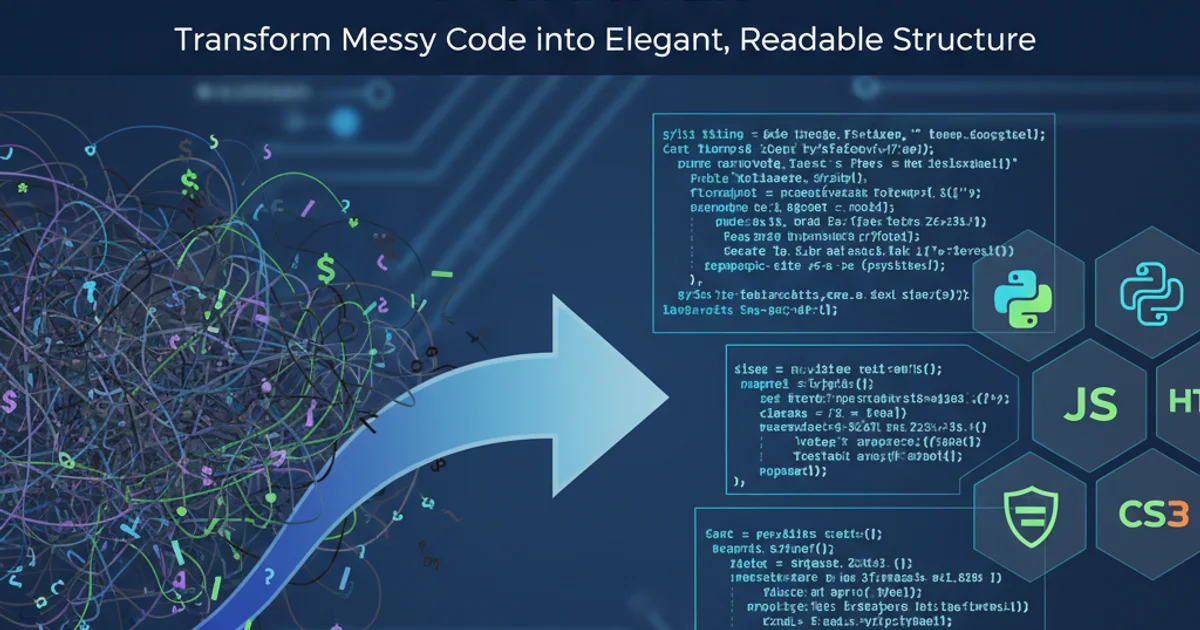javascript substring
Categories:
Mastering JavaScript String Substring Methods

Explore the substring(), substr(), and slice() methods in JavaScript for extracting parts of a string, understanding their differences, and choosing the right one for your needs.
In JavaScript, manipulating strings is a common task, and extracting a portion of a string is one of the most frequent operations. JavaScript provides several built-in methods to achieve this: substring(), substr(), and slice(). While they all serve a similar purpose, their behaviors differ in subtle but important ways, especially concerning how they handle arguments and negative values. Understanding these distinctions is crucial for writing robust and predictable code.
Understanding substring()
The substring() method extracts characters from a string between two specified indices. It takes two arguments: startIndex and endIndex. The startIndex is inclusive, and the endIndex is exclusive. If endIndex is omitted, substring() extracts characters from startIndex to the end of the string. A key characteristic of substring() is its handling of arguments: if startIndex is greater than endIndex, it swaps the two arguments internally before extracting the substring. It also treats negative arguments and NaN as 0.
const str = "Hello, World!";
console.log(str.substring(0, 5)); // "Hello"
console.log(str.substring(7)); // "World!"
console.log(str.substring(7, 2)); // "llo, " (arguments swapped internally)
console.log(str.substring(-5, 5)); // "Hello" (negative treated as 0)
console.log(str.substring(5, 0)); // "Hello" (arguments swapped internally)
Examples demonstrating the substring() method's behavior.
substring() is forgiving with its arguments. It will always return a valid substring by swapping indices or treating invalid numbers as 0, making it less prone to errors when dealing with potentially malformed input.Exploring slice()
The slice() method extracts a section of a string and returns it as a new string, without modifying the original string. Like substring(), it takes startIndex (inclusive) and endIndex (exclusive) as arguments. The main difference lies in its handling of negative arguments. slice() interprets negative startIndex or endIndex as an offset from the end of the string. For example, -1 refers to the last character, -2 to the second to last, and so on. If startIndex is greater than endIndex, slice() returns an empty string.
const str = "Hello, World!";
console.log(str.slice(0, 5)); // "Hello"
console.log(str.slice(7)); // "World!"
console.log(str.slice(-6)); // "World!" (starts 6 chars from end)
console.log(str.slice(0, -7)); // "Hello," (ends 7 chars from end)
console.log(str.slice(7, 2)); // "" (startIndex > endIndex, returns empty string)
Examples illustrating the slice() method, including negative index handling.
slice(). While powerful for extracting from the end of a string, an startIndex greater than endIndex will result in an empty string, which might not be the desired behavior if you expect substring()'s argument-swapping logic.Introducing substr() (Legacy)
The substr() method extracts a specified number of characters from a string, starting at a given index. It takes two arguments: startIndex and length. The startIndex is inclusive, and length specifies the number of characters to extract. If length is omitted, substr() extracts characters from startIndex to the end of the string. substr() also accepts negative startIndex values, which are treated as an offset from the end of the string, similar to slice(). However, substr() is considered a legacy feature and is generally discouraged in new code in favor of substring() or slice().
const str = "Hello, World!";
console.log(str.substr(0, 5)); // "Hello"
console.log(str.substr(7, 6)); // "World!"
console.log(str.substr(7)); // "World!"
console.log(str.substr(-6, 6)); // "World!" (starts 6 chars from end, takes 6 chars)
Examples of the substr() method, demonstrating its startIndex and length arguments.
substr() is still widely supported, it's officially deprecated in ECMAScript. For new development, it's best practice to use substring() or slice() as they offer more consistent behavior and are part of the modern JavaScript standard.flowchart TD
A[Start String] --> B{Choose Method}
B -- "substring(start, end)" --> C[Handles negative/swapped indices by adjusting to 0 or swapping]
B -- "slice(start, end)" --> D[Handles negative indices as offset from end; returns empty if start > end]
B -- "substr(start, length)" --> E[Handles negative start as offset from end; extracts 'length' chars]
C --> F[Result: New String]
D --> F
E --> FDecision flow for choosing JavaScript string extraction methods.